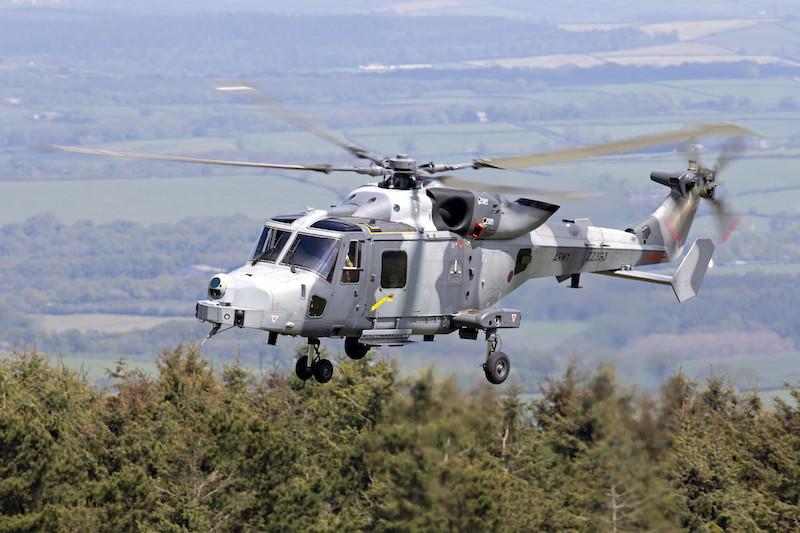
FARNBOROUGH—Leonardo’s AW159 Wildcat naval helicopter could be in line for a second wind in terms of orders, a company official says.
The OEM is targeting around six campaigns in Asia, the Middle East and—notably—New Zealand, where Leonardo says the Yeovil, England-built helicopter could potentially capture new orders.
“We continue to see a great future for the AW159 as a versatile naval and land helicopter,” Adam Clarke, managing director of Leonardo Helicopters UK, told journalists here on the opening day of the Farnborough Airshow. “I’m not looking to close that line. I’m looking to grow it, and I see the numbers in the marketplace that support it,” he says.
Clarke would not say which nations are showing interest, nor the numbers of aircraft that could be acquired.
The positive outlook emerges after Leonardo’s Industrial Plan, published in March, said that a program sustainability evaluation was underway for the AW159. Just 10 AW159s have been sold for export to the Philippines and South Korea, while a trio are being manufactured for a North African customer. Those are in addition to the 62 produced for the British Army and Royal Navy.
“The helicopter has low operating costs and requires fewer operators and maintainers compared to rival platforms,” Clarke says. “For these reasons, we have seen tangible green shoots in the international outlook for the AW159.”
Of particular interest is New Zealand’s Maritime Helicopter Replacement Program, which aims to replace the country’s Kaman SH-2G(I) Seasprites.
Clarke says Leonardo’s proposal meets Wellington’s specific requirements and has “full support” from the UK government. Leonardo has also established relationships with New Zealand industry to bolster its bid and create a local support center for the helicopter.
In addition to potential exports, Leonardo is also gearing up to support plans for a Capability Sustainment Program for the UK Wildcat that would extend the helicopter’s service life by adding upgrades and removing obsolescence.
Clarke says he is eager to grow production at Yeovil beyond the AW159 and the three-engine AW101 to include the twin-engine utility AW149, which Leonardo has proposed for the UK’s New Medium Helicopter requirement. Clarke is also hopeful that the company’s Proteus rotary-wing uncrewed aircraft system (RWUAS) could also become a product. Proteus is a 2-3 metric ton RWUAS being delivered through the UK Defense Ministry’s RWUAS Technology Demonstration Program. A conventional helicopter, Proteus will be able to carry different modular payloads, enabling missions such as anti-submarine warfare and cargo hauling.
Proteus’ first flight is planned for the first quarter of 2025, but few details have emerged about the aircraft—although it is understood to be using a European engine. Clarke says Leonardo is synthetically testing a multi-static, anti-submarine-warfare capability using a full digital twin of Proteus. A dynamic integration rig is also being used to test the advanced autonomous systems onboard the aircraft, he adds.
